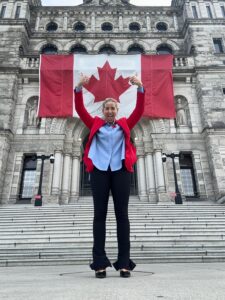“The World Happiness Report 2021 focuses on the effects of COVID-19 and how people all over the world have fared. Our aim was two-fold, first to focus on the effects of COVID-19 on the structure and quality of people’s lives, and second to describe and evaluate how governments all over the world have dealt with the pandemic. In particular, we try to explain why some countries have done so much better than others.”
- CHAPTER 1 Overview: Life under COVID-19
- CHAPTER 2 Happiness, trust, and deaths under COVID-19
[Excerpt] There has been surprising resilience in how people rate their lives overall. The Gallup World Poll data are confirmed for Europe by the separate Eurobarometer surveys and several national surveys.
The change from 2017-2019 to 2020 varied considerably among countries, but not enough to change rankings in any significant fashion materially. The same countries remain at the top.
Factors supporting successful COVID-19 strategies includeconfidence in public institutions. Trusted public institutions were more likely to choose the right strategy and have their populations support the required actions. For example, Brazil’s death rate was 93 per 100,000, higher than in Singapore, and of this difference, over a third could be explained by the difference in public trust.
– income inequality, acting partly as a proxy for social trust, explains 20% of the difference in death rates between Denmark and Mexico. A second measure of social trust, whether there was a high expected return of lost wallets found by neighbours or strangers, was associated with far fewer deaths.
– whether the country had, or learned from, the lessons from SARS and other earlier pandemics.
– whether the head of the government was a woman. - CHAPTER 3 COVID-19 Prevalence and Well-being: Lessons from East Asia
[Excerpt] East Asia, Australia, and New Zealand’s success are explained in detail as a case study in Chapter 3. The chapter describes country by country, the workings of test and trace and isolate, and travel bans to ensure that the virus never got out of control. It also analyses citizens’ responses, stressing that policy can be effective when citizens are compliant (as in East Asia) and more freedom-oriented (as in Australia and New Zealand). In East Asia, as elsewhere, the evidence shows that people’s morale improves when the government acts. - CHAPTER 4 Reasons for Asia-Pacific Success in suppressing COVID-19
{Excerpt] The Asia-Pacific region has achieved notable success compared to the North Atlantic region in controlling the pandemic, with far lower mortality rates and greater successful implementation of Non-Pharmaceutical Interventions (NPIs) to stop the spread of the disease, such as border controls; face-mask use; physical distancing; and widespread testing, contact tracing, and quarantining (or home isolation) of infected individuals. - CHAPTER 5 Mental health and the COVID-19 pandemic
[Excerpt] The early decline in mental health was higher in groups that already had more mental health problems — women, young people, and poorer people. It thus increased the existing inequalities in mental well-being. - CHAPTER 6 Social Connection and Well-Being during COVID-19
[Excerpt] People whose feeling of connectedness fell had decreased happiness, as did people whose sense of loneliness increased and whose social support was reduced.
Many positive features of a person’s life helped to protect their sense of connectedness. These included gratitude, grit, prior connections, volunteering, taking exercise, and having a pet. It also helped to have activities that provided ‘flow.’
Likewise, there were negative features that weakened a person’s protection. These included prior mental illness, a sense of uncertainty, and a lack of proper digital connections. Clearly, digital connection is vital, and many people have been helped by digital programmes promoting mental health. - CHAPTER 7 Work and Well-being during COVID-19: Impact, Inequalities, Resilience, and the Future of Work
[Excerpt] The impacts of the pandemic on the world of work are likely to endure. Evidence from past recessions and early research from the COVID-19 pandemic suggests that young people who come of age in worse macroeconomic conditions are more likely to be driven by financial security in adulthood. The shift to remote working is likely to last long after the crisis has subsided. Providing future workers with more flexibility and control over their working lives, but at the risk of undermining social capital at work. - CHAPTER 8 Living long and living well: The WELLBY approach
John F. Helliwell – Vancouver School of Economics, University of British Columbia
Richard Layard – Wellbeing Programme, Centre for Economic Performance, London School of Economics and Political Science
Jeffrey D. Sachs – Professor and Director of the Center for Sustainable Development at Columbia University
Jan-Emmanuel De Neve – Director, Wellbeing Research Centre, University of Oxford
Lara B. Aknin – Associate Professor, Simon Fraser University
Shun Wang – Professor, KDI School of Public Policy and Management





